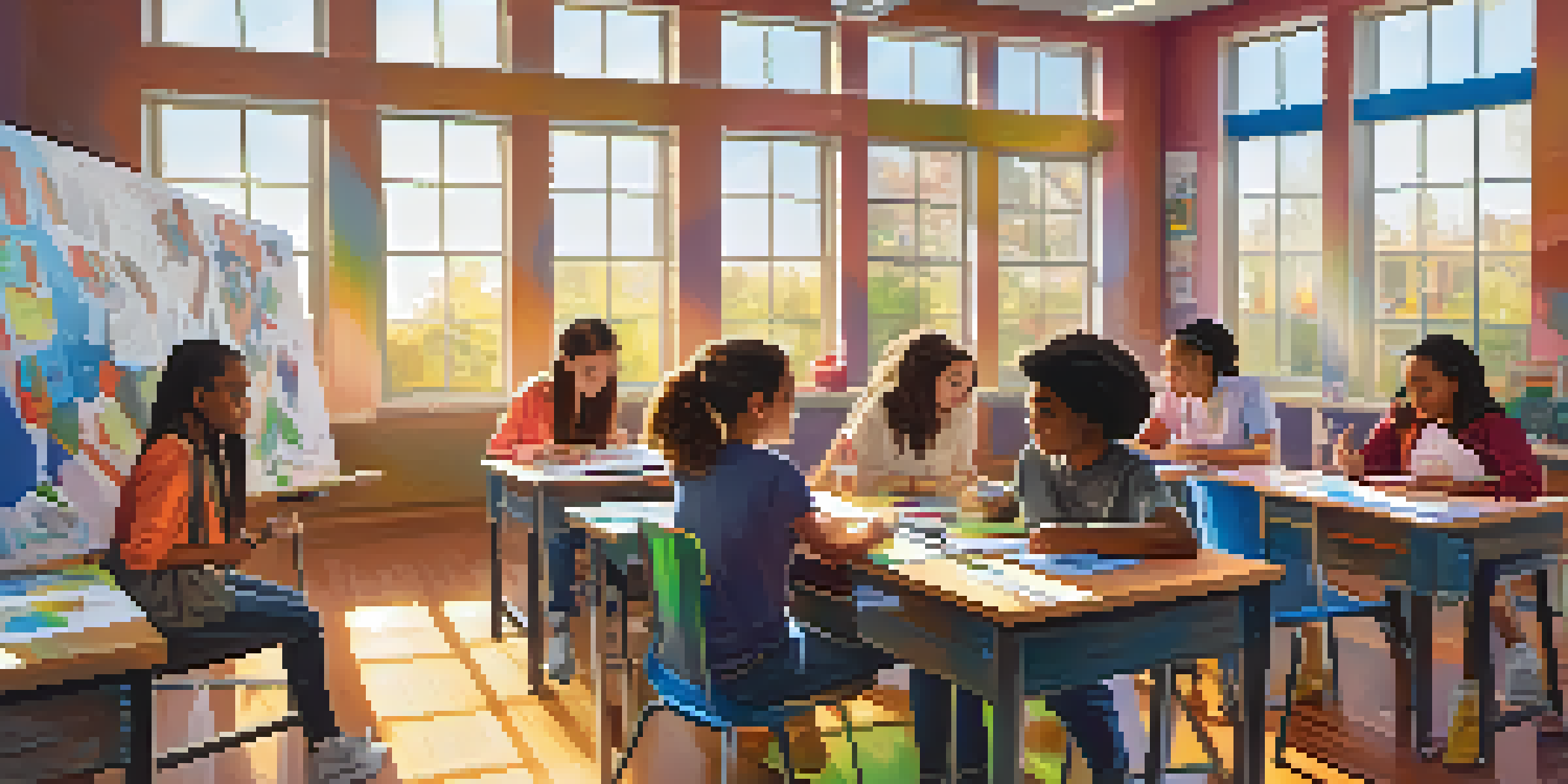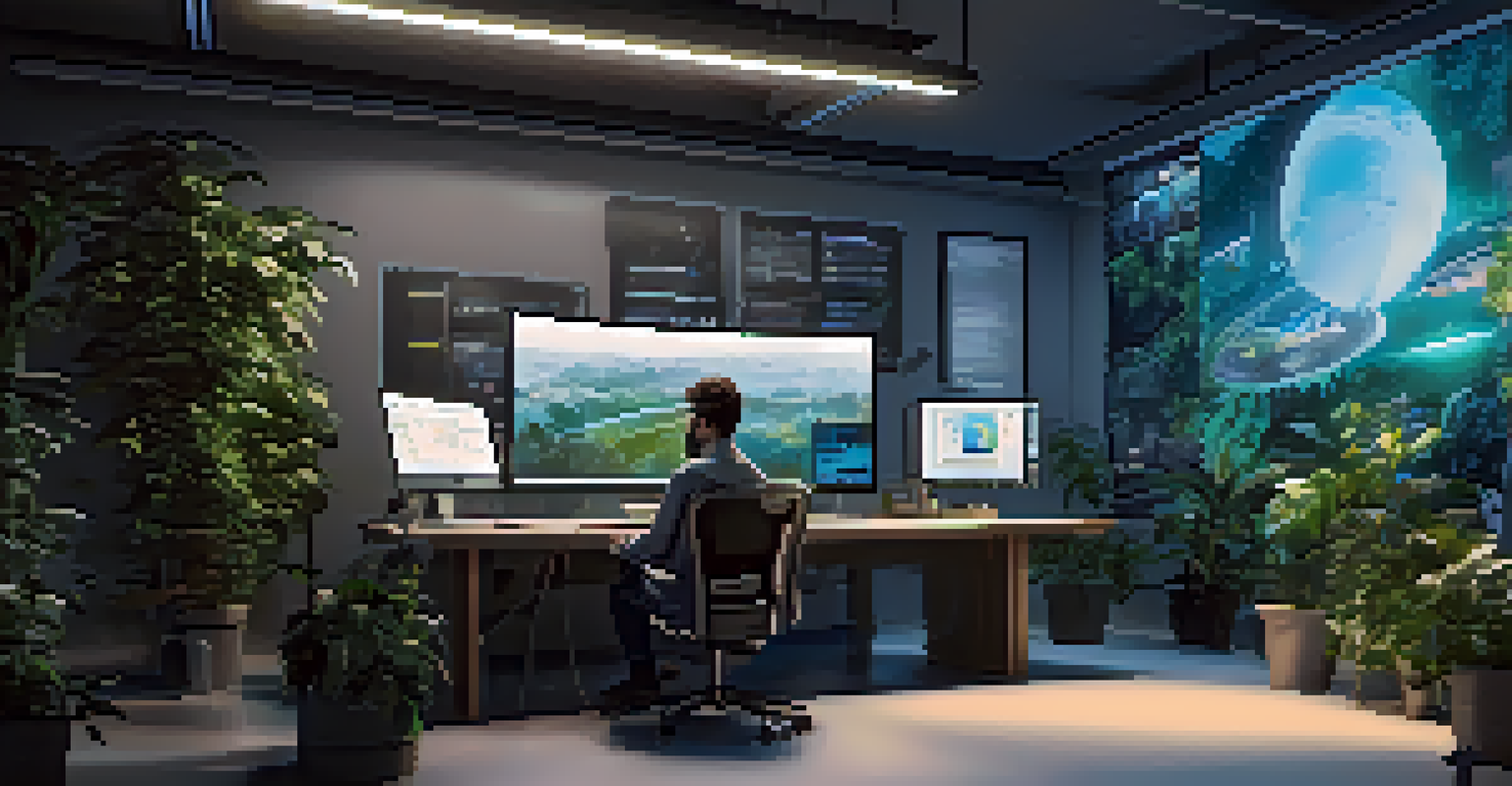Creativity: A Key Component of 21st Century Competencies

Understanding Creativity in Today's World
Creativity is often seen as the realm of artists and musicians, but in the 21st century, it permeates every industry. Whether you're in technology, education, or healthcare, creative thinking helps to solve complex problems and innovate. In essence, creativity is about connecting dots that others might not see, allowing for fresh perspectives and solutions.
Creativity is thinking up new things. Innovation is doing new things.
As we navigate a rapidly changing world, the ability to think creatively is becoming increasingly valuable. For instance, businesses that encourage creative thinking can outperform their competitors by coming up with groundbreaking products and services. This adaptability is crucial in a time when new challenges arise daily.
Furthermore, creativity fosters a culture of collaboration and open-mindedness. When individuals feel free to express their ideas, it leads to a more engaged and motivated workforce. This openness not only enhances individual skills but also strengthens team dynamics, which is essential for achieving common goals.
The Role of Creativity in Problem Solving
Problem-solving is a critical skill in any profession, and creativity plays a vital role in this process. When faced with obstacles, creative thinkers can approach issues from different angles, often leading to innovative solutions. For example, a team faced with declining sales might brainstorm unconventional marketing strategies that set them apart from competitors.

Moreover, creative problem solvers are not afraid to take risks and experiment with new ideas. This willingness to step outside of traditional boundaries can result in breakthroughs that others might overlook. In many cases, the most effective solutions arise from a blend of creativity and critical thinking.
Creativity Drives Innovation
Creative thinking is essential for businesses to develop innovative solutions and outperform competitors.
Incorporating creativity into problem-solving also means embracing failures as learning opportunities. The iterative nature of creative thinking encourages individuals to refine their ideas based on feedback and outcomes, leading to continuous improvement. This mindset is essential for thriving in an ever-evolving landscape.
Fostering Creativity in Education
Education systems worldwide are beginning to recognize the importance of creativity in developing future leaders. By integrating creative thinking into the curriculum, schools can equip students with the tools they need to succeed in a dynamic world. This means not just rote memorization, but encouraging students to explore, question, and innovate.
The chief enemy of creativity is good sense.
For example, project-based learning allows students to engage in real-world challenges, fostering collaboration and creative problem-solving. When students work on projects that interest them, they are more likely to think outside the box and bring unique perspectives to the table. This hands-on approach can ignite a passion for learning that lasts a lifetime.
Additionally, teachers play a crucial role in nurturing creativity by creating a supportive environment. Encouraging risk-taking and celebrating diverse ideas can help students feel safe to express themselves. A classroom that values creativity is one where students learn to embrace their individuality and develop confidence in their abilities.
Creativity and Collaboration: A Powerful Duo
Collaboration and creativity go hand in hand, particularly in today's interconnected world. When diverse minds come together, they can create a rich tapestry of ideas that enhances the creative process. For instance, a marketing team made up of individuals from various backgrounds can generate more innovative campaigns than a homogenous group.
Moreover, collaborative creativity often leads to greater engagement and ownership of ideas. Team members are more likely to invest in a project when they feel their contributions are valued. This sense of belonging can significantly boost morale and productivity, making the team more effective overall.
Collaboration Enhances Creativity
Working together in diverse teams fosters creativity and leads to more engaging and effective ideas.
In practice, fostering a collaborative environment involves open communication and mutual respect. Tools such as brainstorming sessions or creative workshops can facilitate this process. By encouraging team members to share their thoughts freely, organizations can harness the collective creativity of their workforce.
Embracing Technology to Enhance Creativity
In the 21st century, technology serves as a catalyst for creativity. Tools like digital design software, online collaboration platforms, and AI-driven applications can streamline the creative process and expand the possibilities. For instance, graphic designers can use advanced software to create stunning visuals that were once impossible to achieve.
Additionally, technology provides access to a wealth of information and inspiration. Online platforms allow individuals to learn new skills, explore different styles, and connect with a global community of creators. This interconnectedness can spark new ideas and lead to innovative collaborations across borders.
However, it's essential to strike a balance between technology and traditional creative methods. While digital tools can enhance creativity, they should complement rather than replace hands-on experiences. By blending the best of both worlds, individuals can unlock their full creative potential.
Creativity in the Workplace: A Competitive Advantage
In the corporate world, creativity is not just a nice-to-have; it's a competitive advantage. Organizations that prioritize creative thinking often see higher levels of innovation and adaptability. This can manifest in everything from product development to customer engagement strategies, setting them apart in a crowded marketplace.
Moreover, fostering a culture of creativity can lead to higher employee satisfaction and retention. When employees feel encouraged to share their ideas and contribute to the company's vision, they are more likely to feel invested in their work. This engagement translates into better performance and a more positive workplace atmosphere.
Technology Fuels Creative Potential
Digital tools and platforms enhance creativity by providing new resources and opportunities for collaboration.
To cultivate creativity, companies should provide resources and opportunities for employees to explore their interests. Workshops, hackathons, and creative brainstorming sessions can all contribute to a vibrant, innovative culture. In doing so, organizations not only boost their creative output but also empower their workforce.
The Future of Creativity: Trends to Watch
As we look ahead, several trends are shaping the future of creativity in various fields. One significant trend is the increasing integration of artificial intelligence in creative processes. AI can assist in generating ideas, providing insights, and even creating content, which can enhance human creativity rather than replace it.
Another trend is the rise of remote collaboration tools, which allow creative teams to work together seamlessly, regardless of location. This shift opens up new possibilities for diverse collaboration and idea sharing. As more people embrace flexible work arrangements, the potential for creative partnerships will continue to expand.

Finally, there is a growing emphasis on sustainability and social responsibility in creative endeavors. As consumers become more environmentally conscious, brands that prioritize sustainable practices in their creative processes will likely resonate more with their audience. This shift towards purpose-driven creativity will shape the landscape in the years to come.